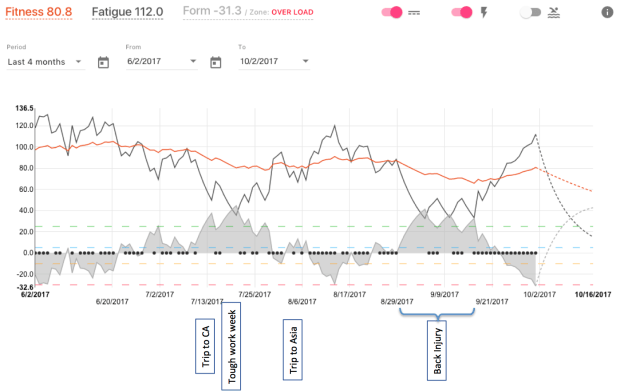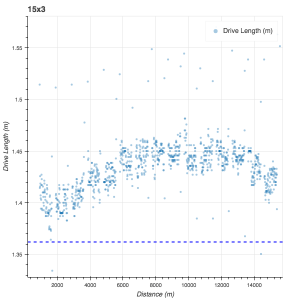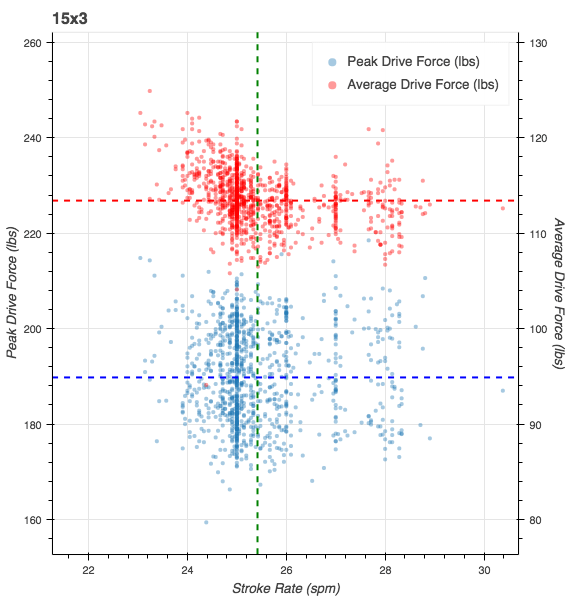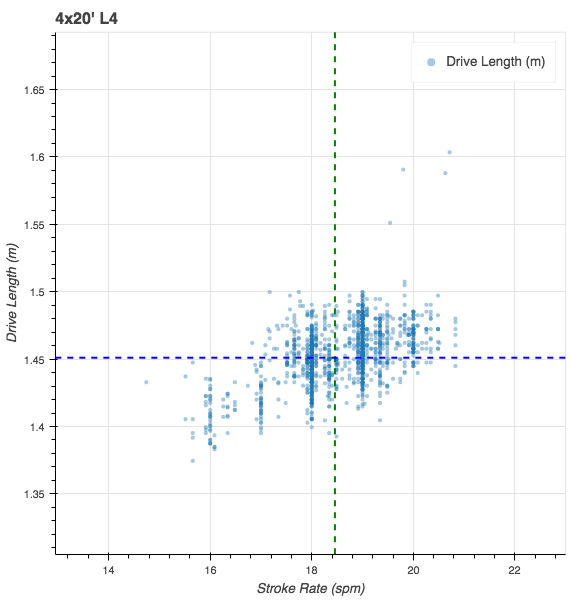This season has been tough. Lot’s of work travel, family vacations, high stakes business meetings, and most recently a back injury. I’ve been doing my best to use Stravasix to examine training load. Here’s the past 4 months

I reached my peak fitness close to the end of june, by the Stravastix scale my fitness was a 105. After that, there was a couple of back to back trips and meetings at work that squeezed my time. I also spent more than a week on a family vacation where my training opportunities were limited. By July 29th, my fitness had declined to 79.
As I got into August, I was able to be a lot more consistent and my fitness started to recover, getting back to about 90 by the 22nd of August. Then I went into another heavy week at work and my training suffered. I came out of that week and got a few good sessions in, but then my back gave out.
Over then next few weeks, I did some walking, running and cross training, but nothing with the necessary intensity to maintain my sharpness, and nothing with enough duration to maintain my endurance. My fitness suffered. By the 17th of September, my fitness was down to 65.8.
The good news was that the rest, core exercise and back hygiene had worked and my back had recovered to the point where I could start rowing again. Over the past couple of weeks, I have gotten in a lot of very solid sessions and my fitness has recovered to 81.
At this point, I have to start to be careful about over training. My fatigue level is quite high. The sort of good news is that I have a trip this week and will need to take at least one rest day because of that.
The thing I want to do is maximize the training stimulus during this week and next week and ramp back the following week, right before the HOCR.
After that, it will be time to take stock and figure out where I go from here.





















